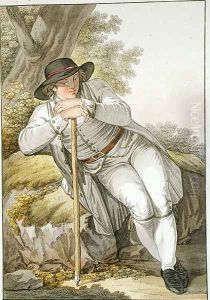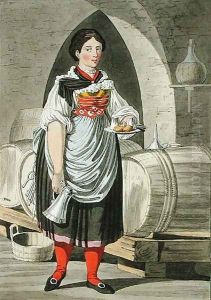Kapeller, Josef Anton Paintings
Josef Anton Kapeller was an Austrian painter and graphic artist known for his landscape and architectural paintings as well as his contributions to the field of graphic design. Born in 1860 in Austria, Kapeller was part of a cultural milieu that was witnessing significant changes due to the rise of modernism towards the end of the 19th century. He received his artistic education at the Academy of Fine Arts in Vienna, where he was likely exposed to a variety of artistic styles, including the then-prevalent academic art, as well as the emerging currents of Art Nouveau and Symbolism.
Throughout his career, Kapeller developed a style that incorporated the detailed realism of academic painting with the more expressive and decorative tendencies of Art Nouveau. He painted scenes that often captured the essence of the Austrian landscape, with a particular focus on the interplay of light and color. His architectural subjects reveal a fascination with the grandeur and history of buildings, rendered with a meticulous attention to detail and a strong sense of architectural form.
Kapeller's graphic work also contributed to the visual culture of his time. He designed posters, postcards, and illustrations, employing the innovative techniques and stylizations that were becoming popular in graphic design. His work in this area helped bridge the gap between traditional forms of art and the more commercial and applied arts that were gaining prominence at the turn of the century.
Unfortunately, Kapeller’s life was cut short when he died in 1901 at the age of 41. His untimely death meant that his artistic output was not as extensive as some of his contemporaries. Nevertheless, his work provides insight into the transitional period of Austrian art at the end of the 19th century and the beginning of the 20th century. Kapeller’s paintings and graphic designs remain of interest to art historians and collectors who study the evolution of style and technique during this pivotal era in European art.

